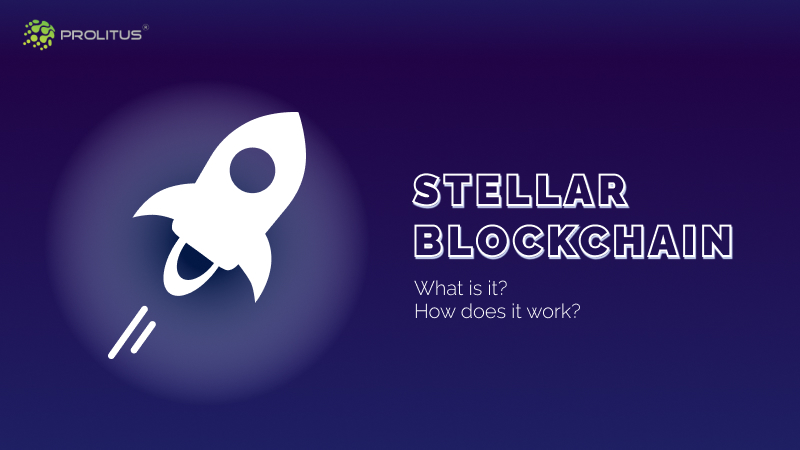Blockchain is no longer an alien technology as it has seen a rise in adoption among businesses, governments, and even individuals. So, to take advantage of this highly lucrative technology, many new blockchain networks have tried to replicate the success of Bitcoin, but not every project can achieve it. Therefore, only those blockchain platforms that are able to solve an existing problem are leading the current crypto market. And Stellar Blockchain is one of those due to its unique features.
Lumen (XLM), the native stellar token, has seen a rise of 34,900% and 226% in 2017 and 2021, respectively. Furthermore, stellar blockchain has also seen massive traction from microinsurance, P2P lending, and international payment processing businesses. Thus, this article will cover everything around the stellar blockchain, so let’s get started.
What is Stellar Blockchain?
The Stellar blockchain is an open-source, decentralized peer-to-peer framework. It connects people, payment systems, and banks to facilitate the low-cost, highly reliable, lightning-fast trade and transfer of various assets and currencies. Lumen (XLM) plays a key role by providing Stellar with the power required to perform the operations and functionalities.
Interestingly, Stellar is forked from Ripple and was founded by Jed McCaleb, who was also the co-founder of Ripple. So, both blockchain networks have some things in common, like changing the way money is transferred quickly and for a small fraction of the cost.
However, there are even a few significant differences between Stellar and Ripple that should be taken care of, like:
- Stellar’s consensus system is called Stellar Consensus Protocol (SCP), and Ripple’s is called Ripple Protocol Consensus Algorithm (RPCA).
- Stellar is an open-source system, while Ripple is a closed system.
- Stellar focuses on players like banks, payment processing partners, loan lending and borrowing institutions, etc., while Ripple primarily focuses on established banks.
Features of the Stellar Blockchain
There are various power-packed features of the Stellar blockchain, but in this section, we will cover some of the most prominent among them. So let’s look at them one by one.
Decentralized and open-source database The Stellar blockchain has a genuinely decentralized and open-source database as various diversified nodes are responsible for inputting and validating transactions on the blockchain. This contrasts with blockchains like Ripple, where a central authority manages all the functions.
1. High-speed transactions with scalability
Prominent blockchain networks like Bitcoin, Ethereum, etc. lag in terms of scalability, the number of transactions, and speed. But stellar blockchain has the ability to overcome these issues with the help of its consensus mechanism and process thousands of transactions per second. However, each transaction can take around 3-5 seconds to get verified, but it is still better than the existing blockchain’s speed. Thus, with this feature, Stellar Blockchain has the power to address both scalability and speed at the same time.
2. Flexible transactions
One of the most significant advantages of the stellar blockchain is that it supports multi-asset and multi-currency transactions. Stellar can do this because of its own cryptocurrency, Lumen, which makes the entire process easy. So, users can use the stellar blockchain to make changes in any currency or asset in a flexible way.
3. Limited lumen supply
There are two blockchains, i.e., ones with a limited cap on the supply of native tokens and others that don’t have any cap. So stellar, just like bitcoin, is one of those blockchains whose supply is capped.
When the stellar network was launched, 100 billion lumens were mined and added to the supply to increase the pool by 1% annually. But in November 2019, the community voted against the plan to increase the supply by 1%. Thus, a new project was deployed to reduce the supply of lumens from 100 billion to 50 billion and not to mint more coins, capping its supply at 50 billion.
Working on the Stellar Blockchain
At a high level, the Stellar blockchain’s operations are similar to those of other decentralized blockchain networks. However, what makes Stellar unique is the use of anchors and a Proof-of-Agreement (PoA) consensus mechanism because transactions are executed and verified in a matter of seconds and at almost zero cost. Moreover, accounting ledgers also play a crucial role as they keep track of every transaction.
Now that you have a broader perspective on the workings of the Stellar Blockchain let’s look at some of its crucial components.
1. Leger system
Stellar’s blockchain has a public ledger, which means it is open, transparent, and can be viewed by anyone in the network. However, it is responsible for storing two vital pieces of information about each account holder:
- Account balance
- Buy and sell operations on the balance
2. Stellar Consensus Protocol (SCP)
As a consensus mechanism, Stellar blockchain employs the Stellar Consensus Protocol (SCP), based on the Federated Byzantine Agreement (FBA). The main advantage of SCP is that it doesn’t require all the nodes in the network to agree upon a transaction to validate it. Instead, it uses a quorum slice to fast-track the validation of transactions.
A software called Stellar Core is installed on all the nodes so that they can be a part of the Stellar consensus process. Thus, every node is interconnected and independent in the Stellar blockchain. Now to validate the transactions, each node selects other nodes which it trusts, followed by these nodes selecting their trusted nodes. In this way, mini networks, called “quorum slices,” are made that overlap and are in charge of validating transactions.
Thus, with the help of this complex process, the Stellar blockchain can validate transactions within 5 seconds, transparently and efficiently.
3. Anchors
Anchors are considered to be one of the most powerful parts of the Stellar Blockchain because they are in charge of two vital tasks:
- Issuing credits to the users
- Holding the deposits of users
Thus, anchors act as a bridge between the Stellar network and different currencies. Furthermore, all the transactions on the Stellar network take the form of credits issued by anchors. However, there is an exception for transactions through the native token Lumen. So it won’t be wrong to say that the working of Stellar Blockchain heavily depends on the anchors.
4. Distributed exchanges
Distributed exchanges are the ones that act as a marketplace for buying and selling various assets and currencies. For example, the Stellar ledger maintains an order book in the currency/issuer pair to fulfill different buy and sell offers.
However, there are three ways in which offers are matched. So let’s have a look at them:
- Facilitating P2P transactions
If someone wants to exchange EUR with USD, then the distributed exchange will try to find someone who wants to buy EUR in exchange for USD. Here, the transaction is carried out as soon as the offer is matched.
- Indirect transactions through Lumen
In the above case, consider that no one wants EUR in exchange for USD, so what the exchange does is find someone who wants EUR in exchange for LUMENS. Then, after exchanging EUR with lumens, it will again find someone who wants lumens for USD and finally complete the transaction.
- Indirect chain conversions
In the worst case, if the above scenario didn’t succeed as the exchange couldn’t find someone who wanted EUR in exchange for lumens, then indirect chain conversions are carried out. Here, first of all, EUR is exchanged with another currency, i.e., INR, then it is again tried to trade with some other currency, i.e., CAD, and so on, till it gets converted to USD.
This is very rare, as lumens handle unwanted situations and bridge the transaction gap.
Business applications of Stellar Blockchain
Stellar is undoubtedly one of the best blockchain networks for facilitating quick and cost-effective cross-border transfers. Thus, several multinational organizations explicitly working in the financial markets are trying to leverage the technology of Stellar Blockchain. However, it should be noted that the application of Stellar Blockchain isn’t just limited to organizations working in the financial sector and is much more than that.
Let’s have a look over a few of the prominent businesses that can use Stellar Blockchain:
- Micropayment processing
- Peer-to-Peer (P2P) borrowing and lending
- Time banks
- ATMs with mobile apps
- International payment processing
- API Mashups
- Remittance payment
- Merchant plugin
- Microfinance and Microinsurance
- Not-for-profit donation systems
- Loyalty point programs
- Multi-currency trading
- Cross-border transfers
- Tracking volunteer hours
Many businesses have already used stellar Blockchain in the above areas, such as IBM World Wire, AnchorUSD, BitGo, Blockchain.com, TokenX, etc.
Still want to explore more of the Stellar Blockchain applications?
Head over to Stellar Blockchain Explorer, similar to the Chrome, Safari, or IE browser for the Stellar Blockchain. It provides you with real-time information, i.e., new blocks added, price history, detailed statistics, and reports of all the assets on the Stellar Blockchain.
Why should you hire Prolitus?
Prolitus is a leading blockchain development company in the crypto space. We have a highly skilled team with relevant experience and expertise in delivering blockchain development services. Furthermore, we have over 12+ years of experience in this space and have delivered more than 750 projects to 500+ esteemed clients.
We provide various Blockchain development services, which include:
- NFT Marketplaces
- Smart Contract Development
- Exchange Platform
- Parachain Development
- dApps Development
- Blockchain KYC Solutions
- Wallet and Node Development
So, whatever your requirements are, our experts are fully equipped to serve and develop them for you.
Final Thoughts
Stellar has immense growth opportunities as it continues strengthening its partnerships with leading global organizations like IBM, Deloitte, Stripe, etc. Also, the powerful combination of anchors and Stellar Consensus Protocol (SCP) makes it possible to get around the problems that other blockchain networks have with scalability, flexibility, and transaction speed.
Thus, it’s high time businesses adopt blockchain technology and shift their work to increase their revenue and efficiency. So, if you are looking to enter the decentralized space or if you are looking for blockchain development solutions, contact Prolitus. Our experts will solve all your doubts and help you build a decentralized platform per your requirements.





